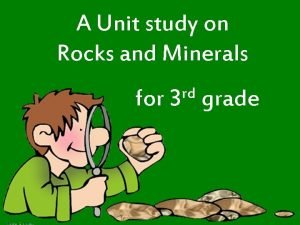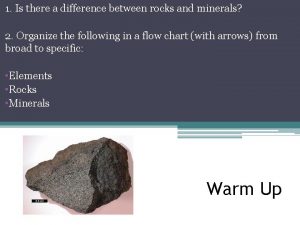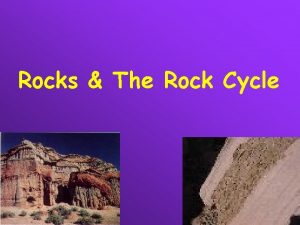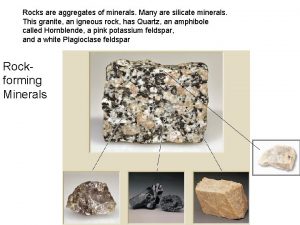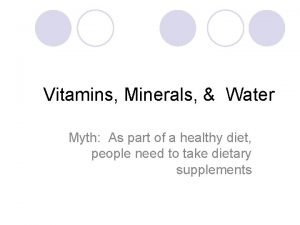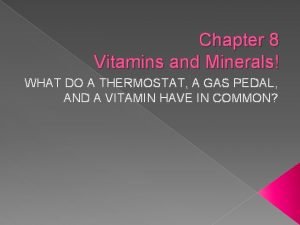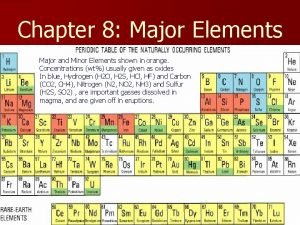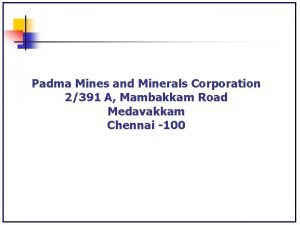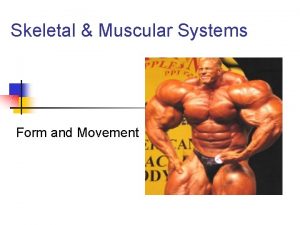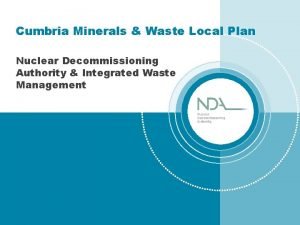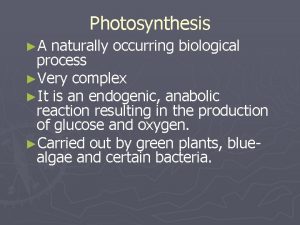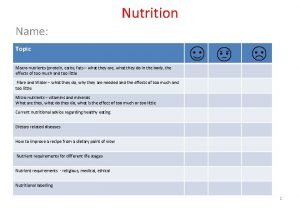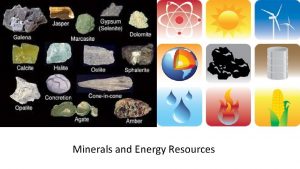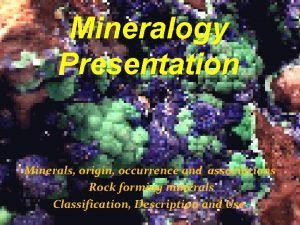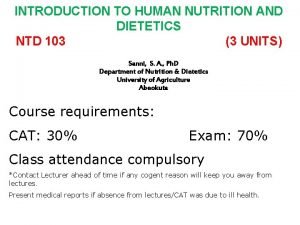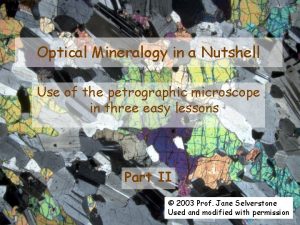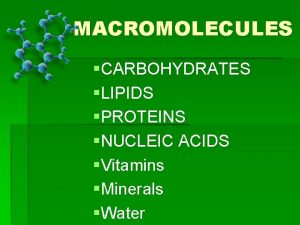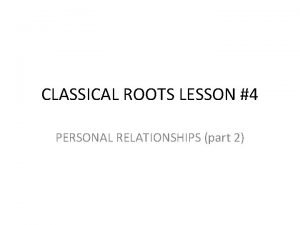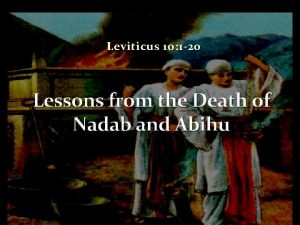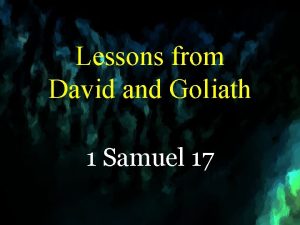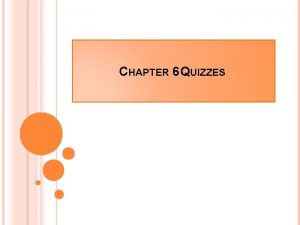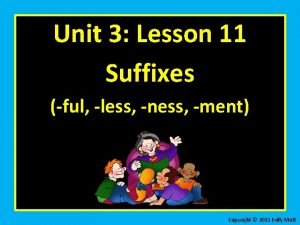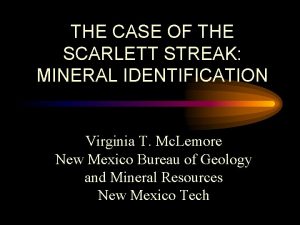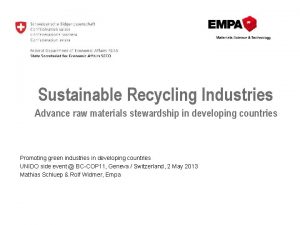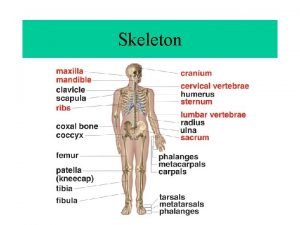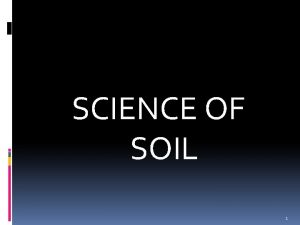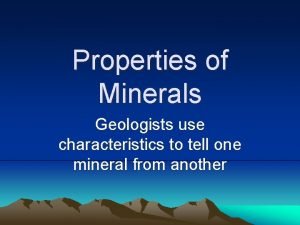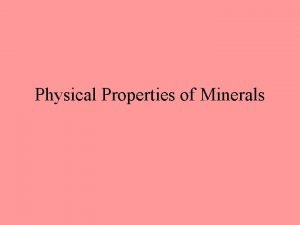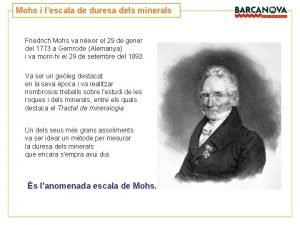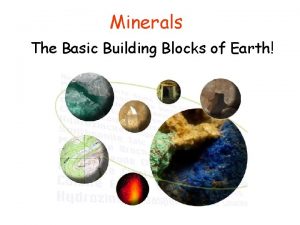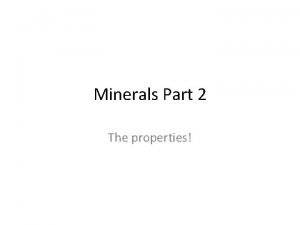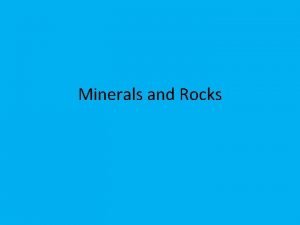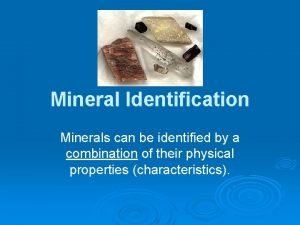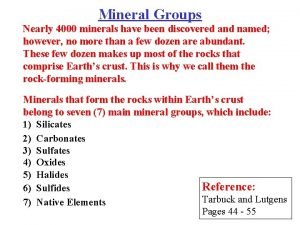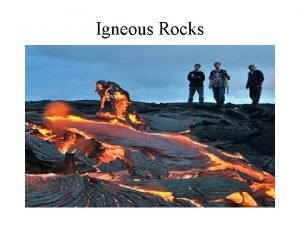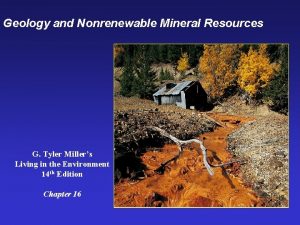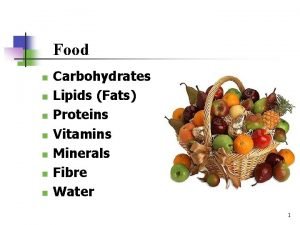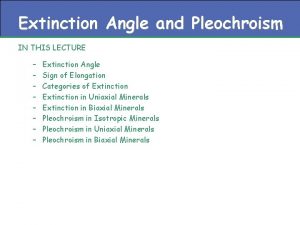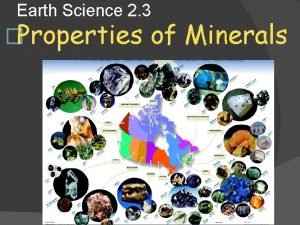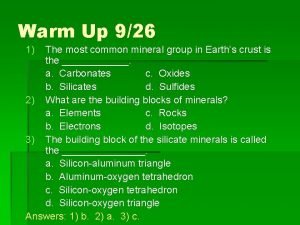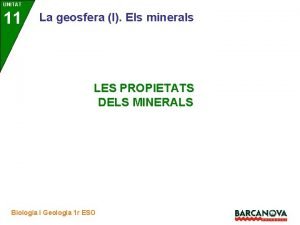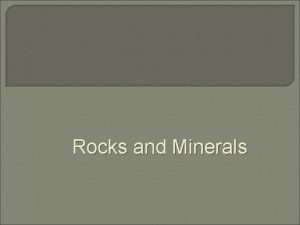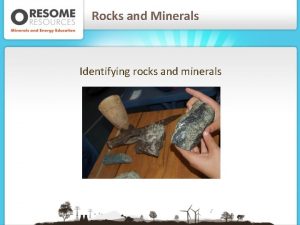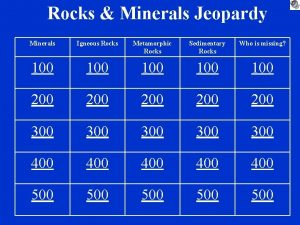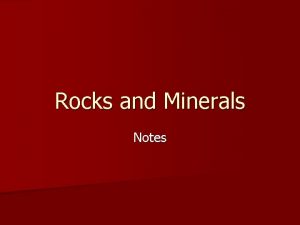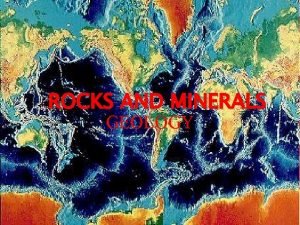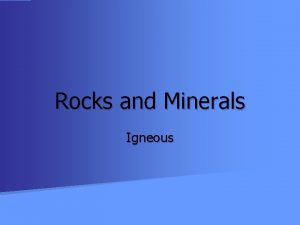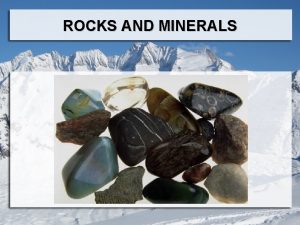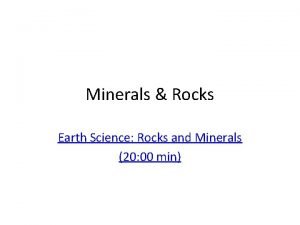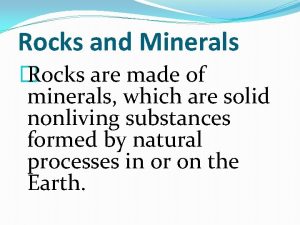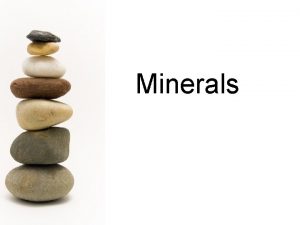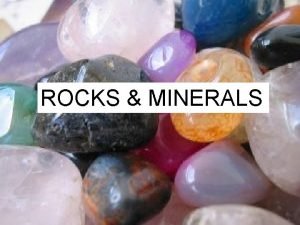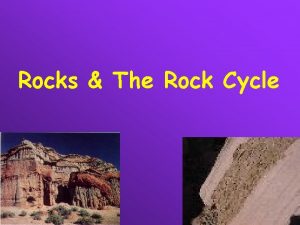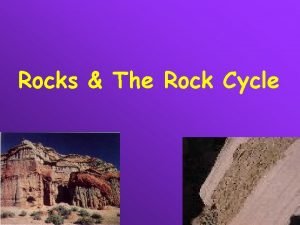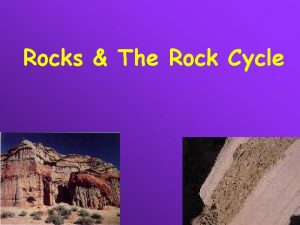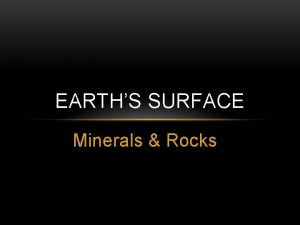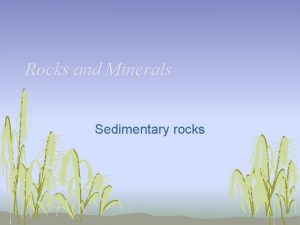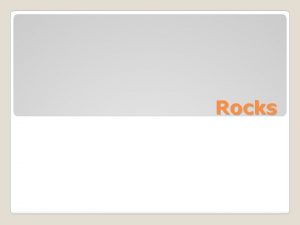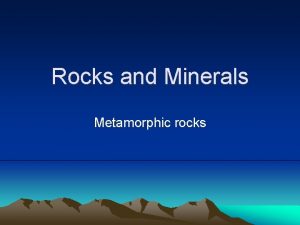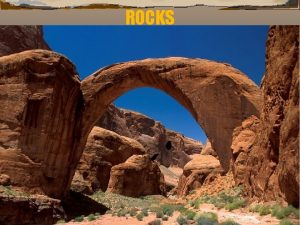Rocks and Minerals Lessons 1 4 Rocks and





















































- Slides: 53

Rocks and Minerals Lessons 1 -4

Rocks and Minerals Lesson 1: Minerals

Lesson Objectives

What is a mineral? �Solids �Inorganic - not living �Natural - not made by humans and found in the ground �Definite crystal structure - atoms are arranged in a predictable way �Definite chemical composition


Formation of Minerals �Form as magma and lava cools – known as crystallization �Form in water as precipitates - an insoluble solid that separates from a liquid solution �Can be weathered by physical and chemical methods �Form by changes in pressure deep beneath Earth's surface - as the pressure increases, minerals combine to become new minerals

Properties of a Mineral Specific Gravity Streak Magnetism Cleavage Acids Luster Gonimeter Hardness

Properties of a Mineral Streak

Properties of a Mineral Cleavage

Properties of a Mineral Luster

Properties of a Mineral Gonimeter

Properties of a Mineral Hardness

Properties of a Mineral Acids

Properties of a Mineral Magnetism


Uses of Minerals �Uranium – fuel for nuclear power plants �Silver – electronics, jewelry, developing photographs �Lead – batteries �Bauxite – aluminum foil, soda cans, airplane parts �Copper – pipes, wire, other parts of industry �Gold – jewelry and industry �Other products that have minerals – lighbulbs, MP 3 players, cereal, cell phones, furniture, powders


Distribution of Minerals

What how 1. Go to the “Assessments” tab: 2. Click on the “S 1 Rocks and Minerals 01: Minerals”

What how 3. Answer all questions and at the bottom check the box, and finally click “submit”.

Rocks and Minerals Lesson 2: Rocks and the Rock Cycle

Lesson Objectives

Types of Rocks �Igneous Rocks – forms when magma cools and crystallizes

Types of Rocks �Sedimentary Rocks – forms from the breakdown of rocks by physical and chemical means then compacts and cements together

Types of Rocks �Metamorphic Rocks – forms when rocks and minerals are subjected to extreme changes in temperature and pressure

The Rock Cycle Intrusive or Extrusive deposition lithification

Let’s Review

What how 1. Go to the “Assessments” tab: 2. Click on the “S 1 Rocks and Minerals 02: Rocks and the Rock Cycle” For assessment instruction help, please visit the student help site at: www. flvsess. com

Rocks and Minerals Lesson 3: Rocks and Minerals as Resources

Lesson Objectives

Similarities and Differences

Mining Rocks and Minerals �Extract Rocks and Minerals from the Earth �Valuable – lots of uses in our daily lives �Mining Techniques �Consequences (pros and cons) �Ore �Reclamation �Economy �Environment �Society

Mining Operations/Techniques �Depends on the type of rock or mineral being mined �Most have heavy machinery moved into the area and dig for the resource �Panning �Extraction from Caves �Dynamite

The Good, the Bad, and the Ugly

The Good, the Bad, and the Ugly

The Good, the Bad, and the Ugly

The Good, the Bad, and the Ugly What else? Pros - Environmental Practices put into place - Build terraces to prevent erosion - Planting - Jobs - Reclamation Cons Destruction of Environment - Trees - Farmland - Houses - Erosion - Water shortages


Case Studies

Case Studies

Case Studies

What 1. how Go to the “Discover” tab page 3: 2. Click on the “Lab Report” 3. Complete Lab and attach to assessment ATTENTION HONORS STUDENTS: You have an additional assessment to complete For assessment instruction help, please visit the student help site at: www. flvsess. com

Rocks and Minerals Lesson 4: Soil and Soil Conservation

Lesson Objectives

It’s Time for Vocabulary �Soil - a thin layer of material on Earth's crust composed of sediments, gases, moisture, and organic matter. �Organic Matter -

It’s Time for Vocabulary �Soil - a thin layer of material on Earth's crust composed of sediments, gases, moisture, and organic matter. �Organic Matter – decomposing plant and animals material or DOM (dead organic matter) �Soil Composition - the types of materials that make up soil �Parent Rock - the primary rock type that forms the soil

Soil Horizons Climate is important in determining the types of soils that form Parent Rock

Soil Type by Color

Soil Type by Grain Size

Soil Type by Texture

Soil Conservation �Contour Farming �Worms �Manure �Fertilizer �Till �Effects of the different spheres on Erosion �Wind �Water �Gravity

Soil Lab

What how 1. Go to the “Assessments” tab: 2. Click on the “S 1 Rocks and Minerals 04: Soil and Soil Conservation” For assessment instruction help, please visit the student help site at: www. flvsess. com
 Types of igneous sedimentary and metamorphic rocks
Types of igneous sedimentary and metamorphic rocks Compaction and cementation
Compaction and cementation Song about igneous rocks
Song about igneous rocks Difference between minerals and rocks
Difference between minerals and rocks Difference between rocks and minerals
Difference between rocks and minerals Rock the concept map
Rock the concept map Poem about minerals and rocks 3 stanza
Poem about minerals and rocks 3 stanza Difference between rock and stone
Difference between rock and stone Rock type
Rock type Quartzite rock cycle
Quartzite rock cycle Rocks are aggregates of minerals
Rocks are aggregates of minerals Intrusive vs extrusive igneous rocks
Intrusive vs extrusive igneous rocks Naviance lasa
Naviance lasa Function of minerals
Function of minerals Chapter 8 vitamins and minerals
Chapter 8 vitamins and minerals What are the elements of major and minor minerals
What are the elements of major and minor minerals Absorbs water and minerals
Absorbs water and minerals Padma mines and minerals corporation
Padma mines and minerals corporation Stores minerals and anchors muscles
Stores minerals and anchors muscles Cumbria minerals and waste local plan
Cumbria minerals and waste local plan Resource that can be replaced
Resource that can be replaced Minerals and fuels
Minerals and fuels Vitamins sources functions and deficiency chart
Vitamins sources functions and deficiency chart Minerals and fuels
Minerals and fuels Importance of rocks
Importance of rocks Vitamin flowchart
Vitamin flowchart Uniaxial indicatrix
Uniaxial indicatrix Site:slidetodoc.com
Site:slidetodoc.com Lessons from shunammite woman
Lessons from shunammite woman Leadership lessons from elijah and elisha
Leadership lessons from elijah and elisha Lessons 3 and 4 personal relationships
Lessons 3 and 4 personal relationships Lessons from nadab and abihu
Lessons from nadab and abihu Lessons from david and goliath
Lessons from david and goliath Chapter 6 quiz 1 lessons 6-1 and 6-2 answers
Chapter 6 quiz 1 lessons 6-1 and 6-2 answers Suffixes ful and less lessons
Suffixes ful and less lessons Streak of minerals
Streak of minerals Conflict minerals
Conflict minerals Storage of minerals
Storage of minerals Semi circular bunds
Semi circular bunds Cleavage of chalk
Cleavage of chalk Properties of minerals
Properties of minerals La escala de mohs minerales
La escala de mohs minerales The building block of the silicate minerals is _____.
The building block of the silicate minerals is _____. Fracture minerals
Fracture minerals Special minerals
Special minerals Is a rusty nail metallic or nonmetallic
Is a rusty nail metallic or nonmetallic Nearly 4,000 minerals have been named
Nearly 4,000 minerals have been named Melted minerals
Melted minerals Economic minerals
Economic minerals Carbohydrate vitamin
Carbohydrate vitamin Extinction in minerals
Extinction in minerals Streak properties of minerals
Streak properties of minerals Most abundant minerals in earth's crust
Most abundant minerals in earth's crust Les propietats dels minerals
Les propietats dels minerals




